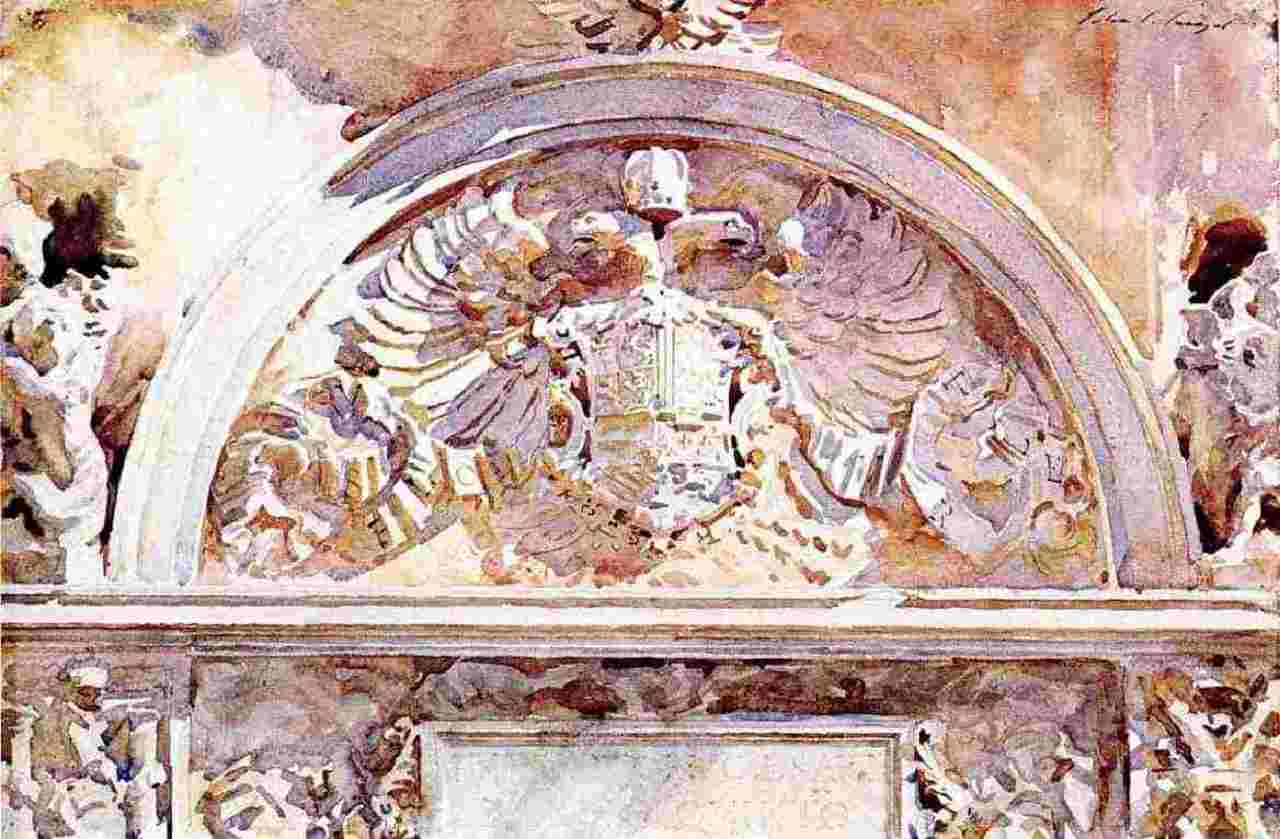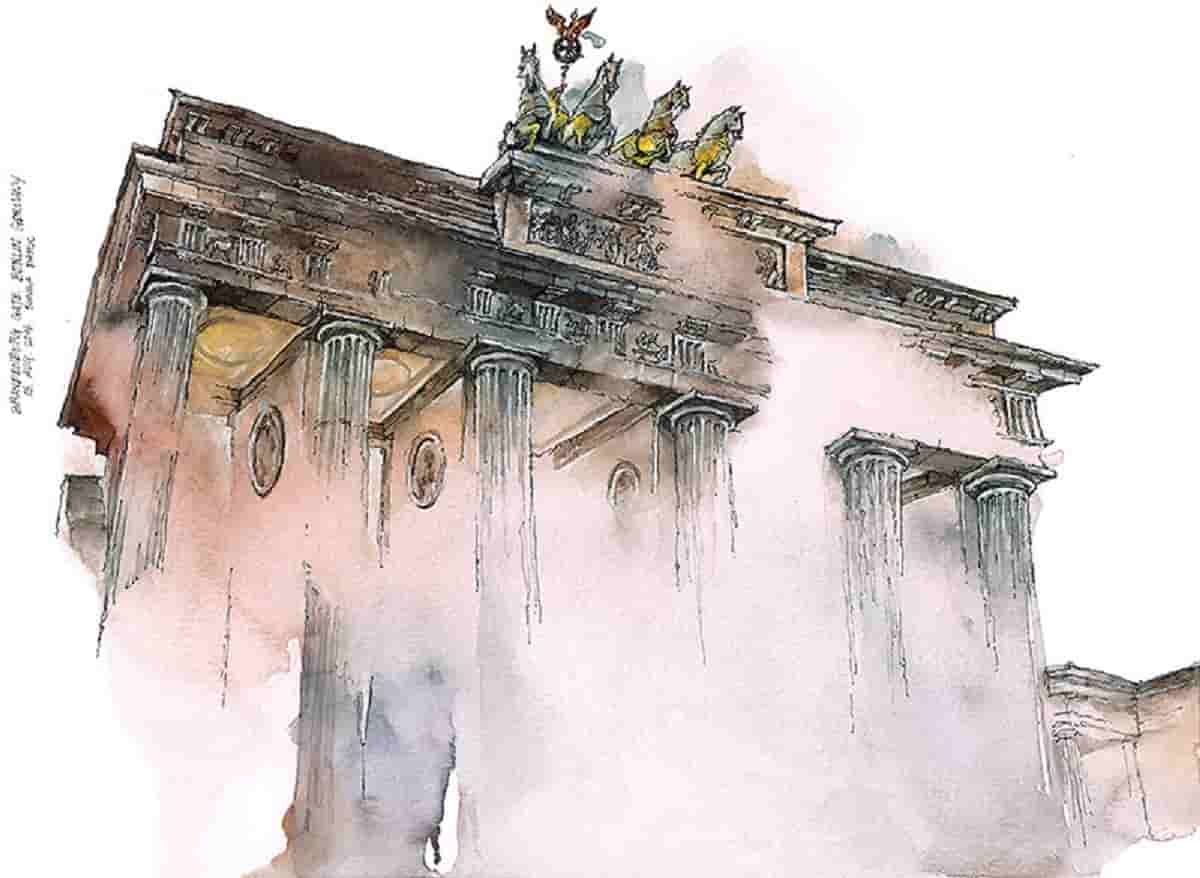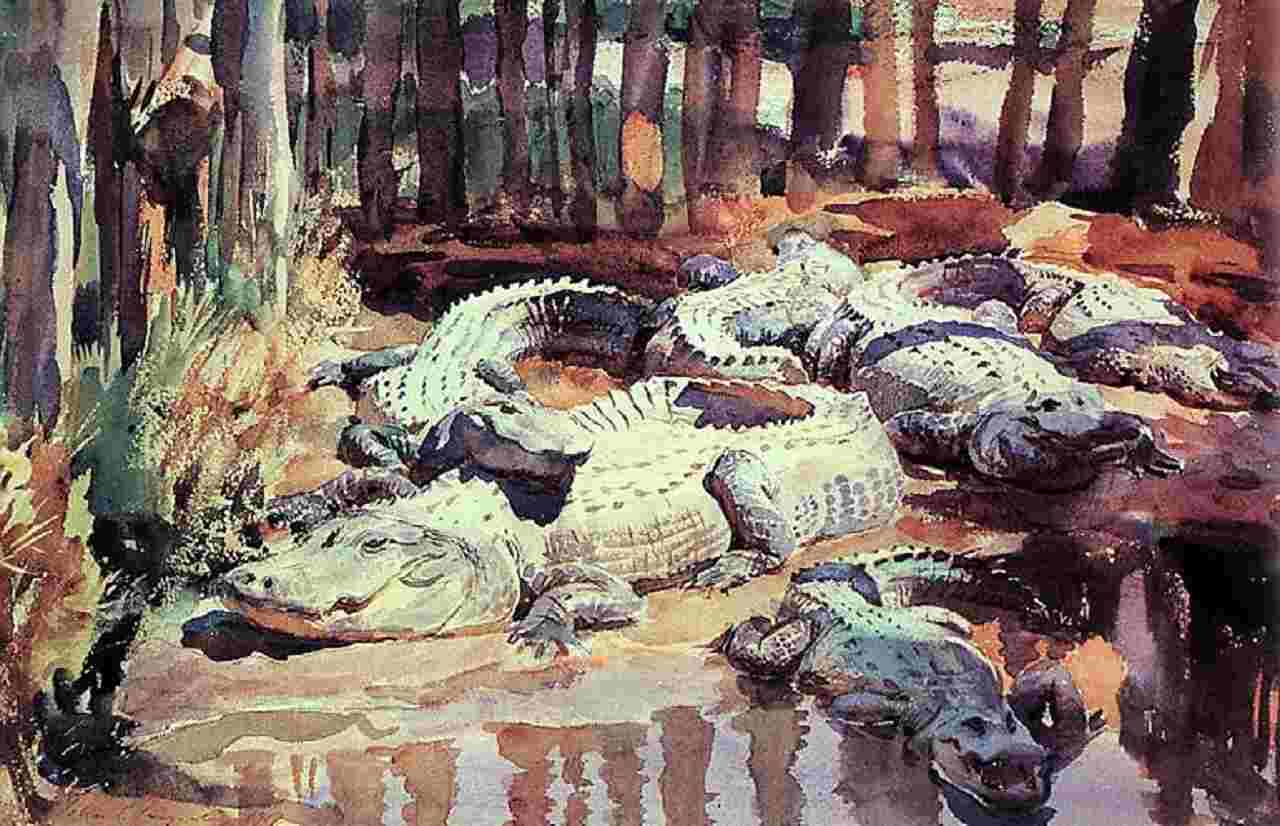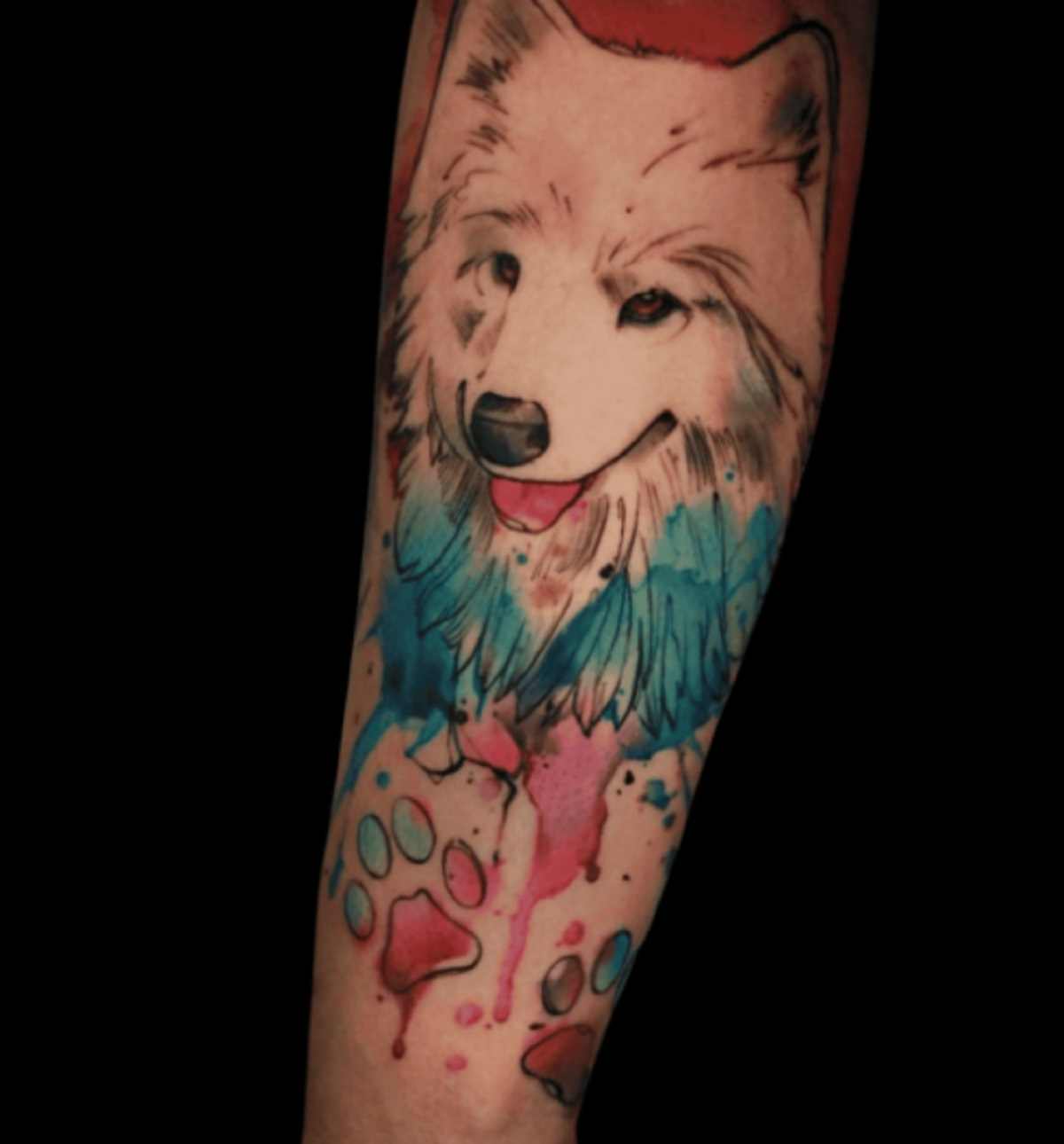Escutcheon of Charles V, a Watercolor and graphite on white wove paper painting by American painter John Singer Sargent shows one of the watercolor techniques watercolorists use for dramatic effects. Image: via Wikimedia PD-US
Home » NEWS »To create amazing watercolor paintings, watercolorists and artists explore various watercolor techniques that every painter should know.
BY SEAN LEWYES
If you ask watercolor artists about their experience using the medium, they will tell you how challenging it is because any mistake could ruin your progress or work. In addition to the fact that it dries very fast, watercolor is also difficult to manipulate and control. While many artists find oil and acrylic easy to work with, they find watercolor intimidating. Beginning watercolor artists, in particular, find the medium daunting. A way out of that fear is to study and understand basic watercolor techniques.
To create amazing watercolor paintings, artists have to explore several watercolor techniques essential to creating great watercolor paintings.
Essential Watercolor Techniques You Have to Try
Many of these watercolor techniques are not new. They have been around for decades, and are essential watercolor techniques you have to try as a painter. In fact, many famous watercolor artists have used some of these techniques for their important paintings. Artists like Winslow Homer, John Singer Sergeant, John La Farge, Thomas Moran, and William Trost Richards are just a few examples. The importance of these watercolor techniques in creating exceptional works continued through the years, and many young watercolor artists are also following in the tradition of the old masters by using these techniques in their paintings.
For those interested in watercolor, here are some watercolor techniques watercolor artists explore to achieve great effects in their paintings
Wet-On-Wet Watercolor Painting

Wet on wet is one of the watercolor techniques watercolorists use to great effects in their paintings. Landscape painters, in particular, explore this technique to create breathtaking skies. The technique requires adding wet pigment to a wet surface. The colors flow and merge with each other to create a marble-like effect.
Artists have been exploring this technique for years because of the amazing quality it brings to their work. Artists like Childe Hassam, Maurice Prendergast, Charles Demuth, Wassily Kandinsky, Emil Nolde, Paul Klee, Egon Schiele, Georgia O’Keeffe, and Edward Hopper are just a few examples. Many contemporary artists are also using this technique in their work. Although the effect of the wet-on-wet technique depends on the quality of watercolor paper or brand of watercolor, overall, using this watercolor technique is an effective way to create beautiful skies in a landscape painting.
Wet-On-Dry

The wet on dry is another of the watercolor techniques artists explore in their watercolor paintings. This technique involves applying wet paint on a dry surface. The dry surface could be on another color. Examples of this technique are evident in works of great artists like Vincent Van Gogh, Philip James, Sarah Crease, Richards Trost William, Samuel Palmer, William Turner, and William McTaggart among others. Illustrators and designers also use this technique to achieve precise and defined shapes in their works. A significant effect of the technique is depth. Since watercolor is transparent, when wet paint is laid over dry paint, the one below becomes visible creating an illusion of depth.
Dry Brush Technique

Watercolor artists use the dry brush technique to achieve texture and other effects in their paintings. This is a straightforward technique. As the name suggests, it involves spreading dry paint over a dry surface. The result is a highly textured mark. Artists often use it to imply fur, hair, grass, and dry bushes.
Masking Tape or Art Masking Fluid

In order to preserve space or prevent paints from getting to an area of a painting, many watercolorists use masking tape or art masking fluid. These materials are effective in preventing pigments from spreading or bleeding into particular areas of a painting. Many artists use them to preserve the wight areas of their paintings. When the painting is dry, the masking tape or rubber cement is peeled off to reveal the surface below. Some artists use this technique to preserve the white surface of the watercolor paper. Others use them to show depth and the interplay of colors.
Using Salt to Add Texture

What has salt got to do with watercolor? A lot. Salt is one of the materials artists have been using for many years to great effect in their works. This watercolor technique involves spreading salt on a watercolor paper saturated with wet watercolor paint. After the paint dries, the salt is scraped off. If done well, the result can be exhilarating. Another way to use this technique is to add salt to some water and use it to wet the watercolor paper. When the paint is added to the wet surface, it spreads out beautifully.
Lifting Off Paint

Lifting off paint is one of the watercolor techniques that artists explore to achieve special effects in their water paintings. The technique involves the use of different types of plastics-bubble wraps, plastic wraps, and wax paper. The process of using these materials is the same. After saturating a watercolor paper with wet pigments, a bubble wrap, plastic wrap, or wax paper is placed over the painting.
For maximum effect, it is better to let the paints dry overnight. Some artists put weight on their paintings to compress the paint and wrap. When the materials are removed, they leave behind interesting textures. The effect of using bubble wraps depends on the size of the bubble wraps. When using plastic wraps or wax paper, it is better to crinkle or crease them for better textural effects. Some artists even put the wet pigments on the plastic wrap and then place the watercolor paper over it and press hard.
Using Rubbing Alcohol

Using rubbing alcohol to create a special effect is one of the watercolor techniques watercolor artists have perfected over the years. The technique involves adding rubbing alcohol to a wet surface. One way artists do this is to use a utensil like a q-tip to dab the rubbing alcohol on the saturated surface. Another is to use the eyedropper. The resulting effect is like a tie-dye.
Glazing and Blending Watercolor Techniques

Although this is a technique primarily associated with oil painting, watercolor artists also use it in their work. Simply put, glazing is the layering of colors over other colors to modify the appearance of the paint under it. In watercolor painting, watercolorists use glazing to control values, effect subtle change, create texture, as well as to attain luminosity. The transparent nature of watercolor makes this one of the important watercolor techniques watercolorists use in their works.
Scratch-Off

This technique requires the use of sharp or pointed objects. While some artists use palette knives and nails, others use sewing needles. The important thing is to apply the technique when the paint is still wet. After painting a wash, artists use their choice of shape object to scratch and drag a line across the surface of the paper, leaving a mark. Paint will fill the scratched area creating a darker and more defined area than the wash. Some artists use this technique when the paint is dry. This way, they reveal the white of the watercolor paper. Landscape painters use the scratch-off technique to create contrast in their painting especially when painting grass. Also known as sgraffito, animal portrait painters also use the scratch-off technique when painting whiskers.
Graded Wash Watercolor Technique

The graded wash technique allows artists to build up color from plain water to saturated paint mix. Also known as ombré, the technique involves achieving a smooth transition from light to dark using one color. Some artists achieve this effect using the wet-on-wet technique while others explore the wet-on-dry methods. The wet-on-wet approach involves dragging a brush saturated with paint over a wet surface. As the process continues, less paint is used until the desired tonal range is achieved. The wet-on-dry requires using wet paint on a dry surface. More water is added to make the pigment lighter as the process continues. The main objective is to achieve a seamless transition from one value to the next.
Gradients

Many artists use the gradient technique in their watercolor paintings to achieve harmony and balance. Although this technique is popular with landscape painters who use it to paint skies and sunsets, many watercolorists use it to show the effect of lights on objects. The gradient technique is almost like the graded wash except that in this case, artists use more than one color to achieve color gradations. The objective is to accomplish a smooth transition from one color to another. To do this, artists often use analogs colors or two colors that are close together on the color wheel. Colors like blue and purple, green and yellow, blue and green, and red and yellow are some of the combinations artists use. The choice of analogs color is not just to realize harmony but also to prevent a muddy gradient.
Do you know of watercolor techniques not mentioned in this collection of watercolor techniques? Let us know about them. Follow Us: Instagram–Facebook– Pinterest
Originally posted 2019-01-26 23:39:32.




You must be logged in to post a comment.